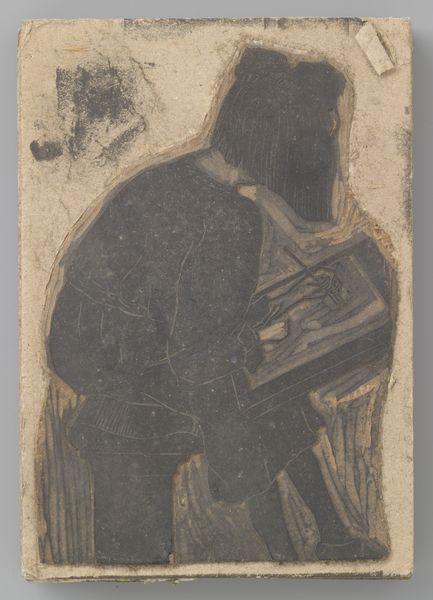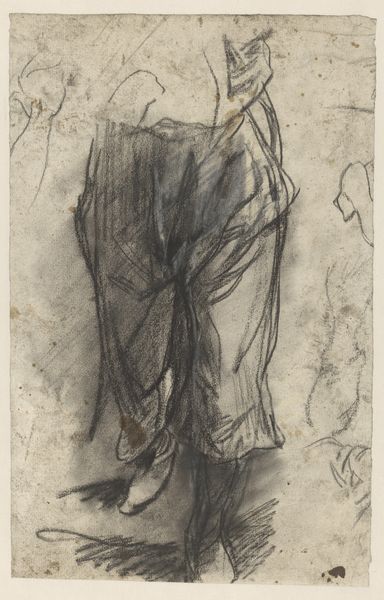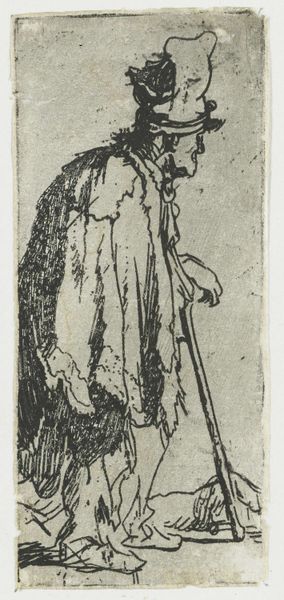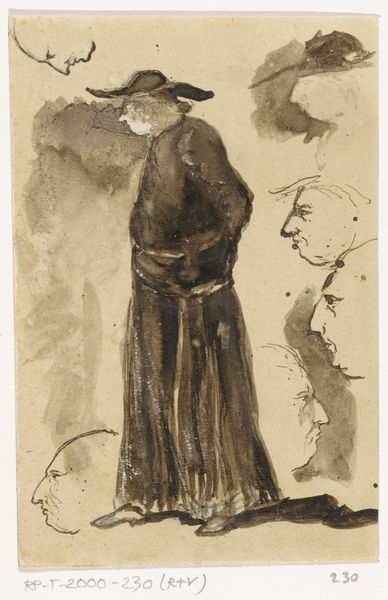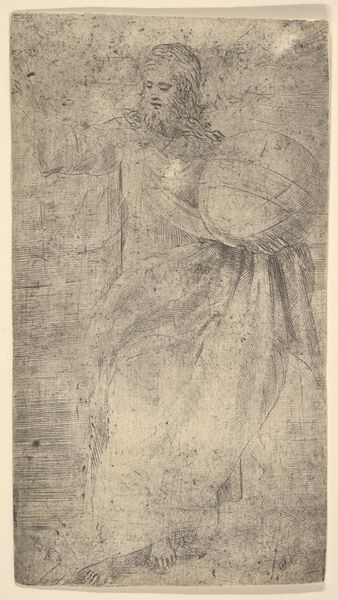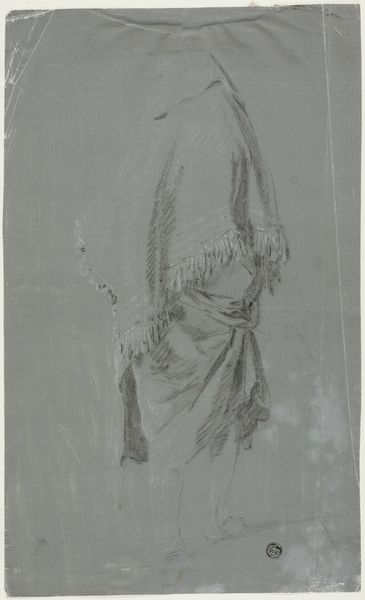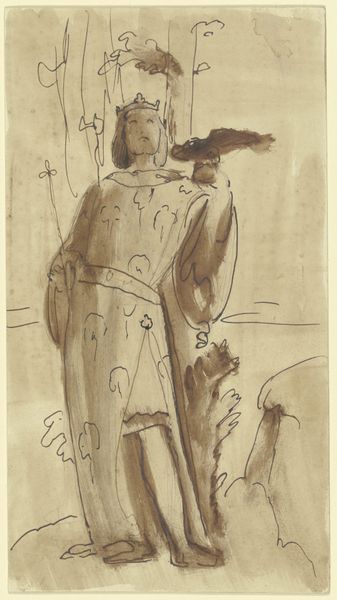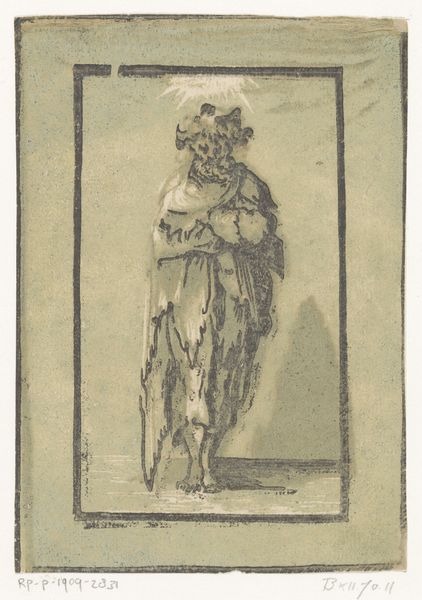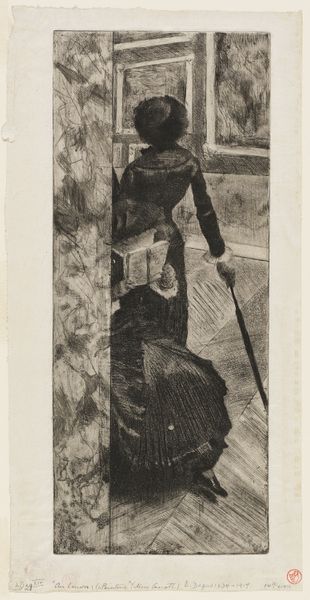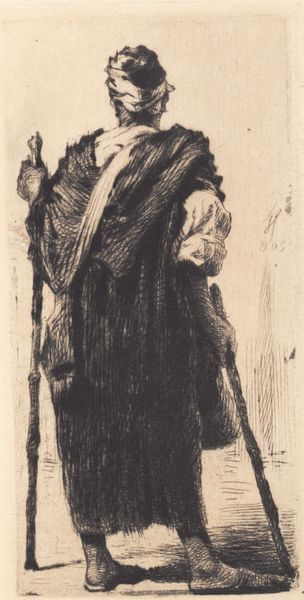
drawing, charcoal
#
portrait
#
drawing
#
charcoal drawing
#
oil painting
#
pastel chalk drawing
#
charcoal
#
academic-art
#
watercolor
#
realism
Copyright: Public domain
Editor: This is Jules Bastien-Lepage’s *Portrait de Victor Hugo* from 1884. It’s rendered in charcoal, giving it a somewhat somber and fleeting quality, as if capturing a momentary glimpse of the writer. What strikes you about it? Curator: The choice of charcoal, especially for depicting such a public figure, is very telling. Hugo, by 1884, was a cultural institution. Bastien-Lepage's loose rendering feels like an intentional dismantling of that monumental status, wouldn't you agree? Editor: I can see that, definitely a departure from the more formal, idealized portraits we often associate with figures like Hugo. But was this a commentary, or just a reflection of changing artistic tastes at the time? Curator: I believe it's both. The rise of Realism and Impressionism meant artists were seeking authenticity and immediacy, pushing back against academic conventions. Depicting Hugo in this almost vulnerable state certainly challenges the established iconography around him. Did the location influence you at all? Or Hugo's pose? Editor: He almost blends into the background! With his hand tucked inside his coat like that, he seems reserved, unlike his persona. And the gallery location makes sense, because art both preserves a person's legacy and exposes a side of the sitter people didn't see before. Curator: Exactly. And by showcasing this less imposing Hugo, Bastien-Lepage essentially democratized the image of a national hero, making him more relatable to the public. Consider, too, how photography was changing portraiture's role. How could painting compete but by showing what photos could not? Editor: That's fascinating – almost like revealing the human behind the myth! Curator: Indeed! It highlights the shifting relationship between art, celebrity, and the public’s perception of power in the late 19th century. Editor: I've learned to think of art portraits more as documents about that time's view of greatness and authority. Thanks. Curator: You got it. Viewing artworks as cultural objects opens doors!
Comments
No comments
Be the first to comment and join the conversation on the ultimate creative platform.
